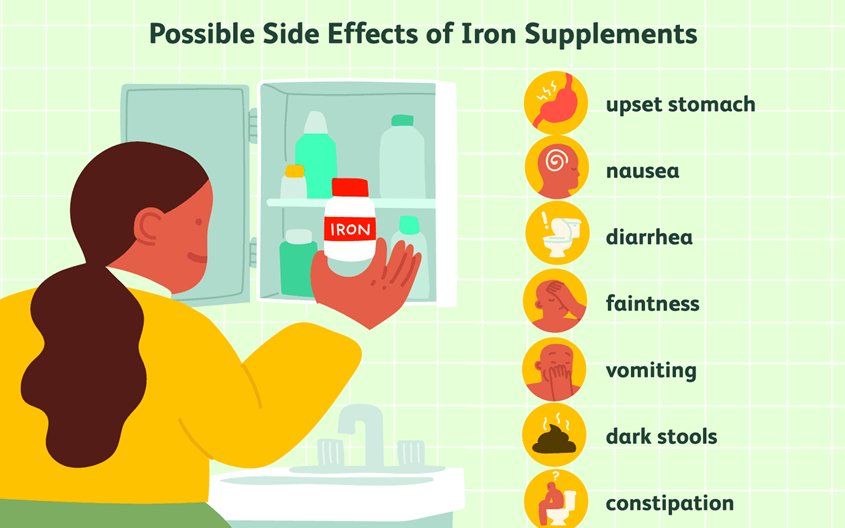A nurse is reinforcing discharge instructions with a client who is taking oral iron supplementation for anemia. Which of the following statements by the client demonstrates an understanding of the teaching?
I should take my supplement with an antacid to prevent an upset stomach.
I should drink my liquid iron supplement undiluted.
I should increase my fiber intake while taking this supplement.
I should notify my doctor if my stools turn black.
The Correct Answer is C
Choice A: This is incorrect because taking iron supplement with an antacid can reduce its absorption and effectiveness. The client should take iron supplement on an empty stomach or with a source of vitamin C to enhance its absorption.
Choice B: This is incorrect because drinking liquid iron supplement undiluted can stain the teeth and cause irritation to the mouth and throat. The client should dilute liquid iron supplement with water or juice and drink it through a straw.
Choice C: This is correct because increasing fiber intake while taking iron supplement can help prevent constipation, which is a common side effect of iron supplementation. The client should also drink plenty of fluids and exercise regularly to promote bowel movements.
Choice D: This is incorrect because notifying the doctor if stools turn black is not necessary as it is a normal and harmless effect of iron supplementation. The client should only notify the doctor if stools are tarry, bloody, or have a foul odor, which can indicate gastrointestinal bleeding.

Nursing Test Bank
Naxlex Comprehensive Predictor Exams
Related Questions
Correct Answer is C
Explanation
Choice C: Recommending consumption of cold items is an action that the nurse should take to help manage stomatitis, which is inflammation and ulceration of the oral mucosa. Cold items can help soothe the irritation and reduce swelling.

Choice a is not correct because providing an alcohol-based mouthwash is an action that the nurse should avoid when caring for a client who has stomatitis. Alcohol can dry and irritate the oral mucosa and worsen the condition.
Choice b is not correct because minimizing the use of gravies and sauces is not an action that the nurse should take to help manage stomatitis. Gravies and sauces can help moisten dry foods and make them easier to swallow for a client who has stomatitis.
Choice d is not correct because discouraging drinking with a straw is not an action that the nurse should take to help manage stomatitis. Drinking with a straw can help prevent contact between fluids and sore areas of the mouth and reduce pain for a client who has stomatitis.
Correct Answer is B
Explanation
Choice A reason: Wiping the top of the feeding container with alcohol is not a priority action, as it is not essential for infection control or safety. The nurse should use a sterile technique when opening and handling the feeding container.
Choice B reason: Placing the head of the client's bed at a 30° angle or higher is a priority action, as it can prevent aspiration or regurgitation of the feeding solution into the lungs, which can cause pneumonia or respiratory distress.
Choice C reason: Rinsing the feeding bag with water once the feeding is complete is not a priority action, as it can be done after ensuring that the client has tolerated the feeding well and has no signs of complications.
Choice D reason: Documenting the client's response to the feeding is not a priority action, as it can be done after performing other interventions and assessments that are more urgent and important for the client's well-being.
Whether you are a student looking to ace your exams or a practicing nurse seeking to enhance your expertise , our nursing education contents will empower you with the confidence and competence to make a difference in the lives of patients and become a respected leader in the healthcare field.
Visit Naxlex, invest in your future and unlock endless possibilities with our unparalleled nursing education contents today
Report Wrong Answer on the Current Question
Do you disagree with the answer? If yes, what is your expected answer? Explain.
Kindly be descriptive with the issue you are facing.
